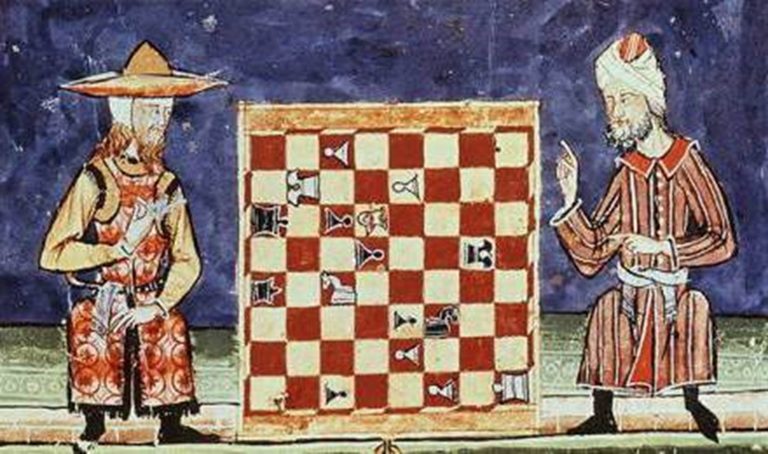“The multi-ethnic city in the Mediterranean world. History, culture, heritage "- 4/5 June 2018

Today we are witnessing a huge influx of foreigners pouring into a city that is hardly enough to contain them. These are largely people without a homeland: they come from all over the world, brought by ambition, the need for work, the role of ambassadors; some driven by their vices, others by the desire to study; some attracted by the shows, others by the possibility of intertwining relationships or under the weight of bad luck ... They arrive en masse, after leaving their homes and hoping to find an opportunity in what is the capital of the world, but not theirs.
They are not today's words: Seneca wrote them about two thousand years ago, in the face of the abnormal growth of the city of Rome. On the surface, they seem perfectly suited to describe some processes that characterize the contemporary world. In reality, almost everything has changed since Roman times: there has been the affirmation of monotheistic religions and the profound reconfiguration of inter-Mediterranean relations; the discovery of new lands beyond the ocean and their systematic exploitation; the industrial revolution and the end (?) of colonialism. The Reformation, the declaration of human rights, the Second World War. The nature of cities has changed profoundly in recent centuries, both in its internal structures and in relations with the regional and state territory, as well as with the wider international context. Center-periphery relations; the economic fabric and the paths of social integration; the cultural differences in height and the forms of sociability: they are as many areas, among many, in which the variation of the scale games has drawn disparate and scarcely comparable urban landscapes. Pure the concepts of citizenship, 'race', ethnicity have been written and rewritten several times.
In this general panorama, the Mediterranean world has always been one of the scenarios in which the meeting / clash of peoples and civilizations has been richer, more varied, intense, often going to impress itself deeply on the face of the city: not only on the coasts and in the border areas, but also within countries that still overlook the sea, and for which the sea was an inescapable reference horizon. This is testified not only by the configuration of urban spaces and the circulation of certain settlement models (ports, fairs, warehouses, ghettos), but also by the linguistic uses and food customs, social and legal practices, many of the most typical cultural and artistic expressions European, the result of an ancient - albeit not always peaceful - habit of coexistence with the foreigner.
The meeting aims to urge AISU members to reflect on the aspects of continuity, such as the moments of articulation and fracture, which have long influenced the multi-ethnic dimension of our cities. Thus, we would like to focus attention on the specificities of the places and periods of a thousand-year history, which gave birth to a cultural heritage - material and immaterial - which today seems to be variously and severely endangered. We intend to discuss them in an eminently historical perspective - starting from well-documented case studies, such as to offer starting points for comparison - without, however, renouncing to question the meaning of our research in a troubled scenario such as the one we live in. Without easy anachronisms, but without even taking refuge in the alibi of the specialist, while before our eyes the Mediterranean is more than ever the scene of ecatombi, exclusions, sufferings, while not lacking projects and experiments aimed at supporting forms of cohabitation less unfair than in the past . In other words, we would like to give the typical questions of our disciplinary traditions a broader horizon, sensitive to the problems of the present time; and this today can only mean also reflecting on the forms of scientific communication and on the role of historical research in the contemporary debate, at a time when consolidated practices seem to be in crisis by the power of the mass media, made more pervasive and widespread than ever unstoppable expansion of new technologies.
Given these premises, the meeting will be divided into several tracks, adopting a mixed formula such as to allow maximum flexibility and transversality both in the ways and in the content of the discussion. On the basis of the intervention proposals that will reach the scientific committee, some thematic (or chronological) sessions will be organized introduced by discussants who will have the task of framing the study topics historically and historiographically, as well as to animate the debate among the participants.
Scientific Board
Salvo Adorno, University of Catania
Alfredo Buccaro, Federico II University of Naples
Teresa Colletta, Università di Napoli Federico II
Giovanni Cristina, École des Hautes Etudes en Sciences Sociales
Gerardo Doti, Università di Camerino
Marco Folin, University of Genoa
Luigi Fontana, Università di Padova
Andrea Maglio, Università di Napoli Federico II
Fabio Mangone, Università di Napoli Federico II
Francesca Martorano, Mediterranean University of Reggio Calabria
Luca Mocarelli, Università di Milano Bicocca
Sergio Onger, University of Brescia
Heleni Porfyriou, CNR-ICVBC
Marco Pretelli, University of Bologna
Fulvio Rinaudo, Polytechnic of Turin
Massimiliano Savorra, Università del Molise
Donatella Strangio, La Sapienza University of Rome
Elena Svalduz, University of Padua
Rosa Tamborrino, Politecnico di Torino
Ines Tolic, University of Bologna
Scientific coordination
Marco Folin, University of Genoa
Alireza Naser Eslami, Università di Genova
Organizers
Initiative organized by the Associazione Italiana di Storia Urbana (AISU) with the patronage of the Department DAD / University of Genoa and the support of:
Laboratoire International Associé MediterraPolis, UMR TELEMME (AMU/CNRS),
Maison méditerranéenne des sciences de l’Homme, Aix-en-Provence
Centro Internazionale di Ricerca sull’Architettura del Mondo Islamico e del Mediterraneo
